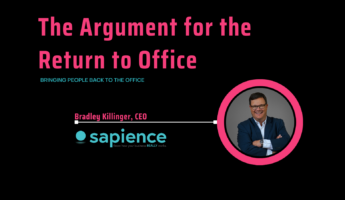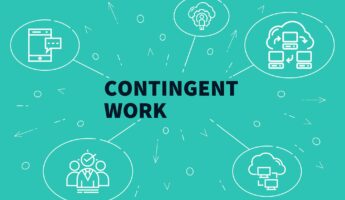Sapience Analytics
5 Ways to Prevent Burnout In the Remote Work Environment

Want to learn more about this? Subscribe below and one of our specialists will get in touch with you with more info!
While productivity by remote workers may currently be exceeding expectations, it’s taking a toll. In April, 41% of employees said they feel burned out from their work, 45% said they feel emotionally drained from their work, and 44% said they feel “used up at the end of their work day,” according to a survey of 1,099 U.S. workers conducted by the Society for Human Resource Management.
These are all classic signs of employee burnout as exacerbated by the mental impact of the COVID-19 pandemic. Let’s take a closer look at burnout and how to alleviate it in your workforce.
What Is Burnout?
True burnout is much more than a bad day or week. It’s a state of “chronic stress and frustration” leading to
• Physical and emotional exhaustion,
• Feelings of cynicism and detachment, and
• A sense of ineffectiveness and lack of accomplishment.
Together, these symptoms significantly interfere with health, happiness and overall quality of life, eventually leading to an inability to successfully function on a personal and professional level.
Engage the Antidotes
The best overall weapon against burnout is to increase employees’ sense of work satisfaction and achievement. Here are a couple of easy things employers can do right now to eliminate common sources of employee stress and frustration.
- Rethink your meetings. Research has long established that meetings are perceived as an unnecessary waste of work time; these feelings have intensified as remote employees are now reporting “Zoom fatigue.” To keep every meeting as productive as it can be, announce a committed action plan, schedule only the fully required members to attend and, most importantly, stick to the agenda and time allotted.
- Initiate and zealously guard a “Golden Hour” policy. This is a planned time when all employees can work without any distractions: no meetings, phones are on silent, emails and chat pop-ups are disabled, and the focus is solely on the work at hand. It could be an hour a day, an entire morning once a week – whatever works for your enterprise.
Let’s look closer at how further rethinking employee time along these lines can help burnout.
Focus On Work, Not Minutes
We are now well past the traditional 9-to-5 work day. As more is demanded of employees, their work hours have increased; this has made time ‘at’ work more valued than time spent ‘on’ work. It’s time to embrace a work model that rewards employees for work effort made and completed, not time spent. When remote employees learn to string together blocks of time when full attention can be paid to work – and when managers are expecting agreed-upon results, not all the minutes on a time clock — employees gain the flexibility to complete tasks and feel positive about their work day.
Encourage “Single-Tasking”
Research shows that multitasking is counterproductive because the human brain can manage only one task at a time. Your employees may spend much of their day trying to complete many activities, but they may miss out on completing the day’s most prioritized task. That feeling of working hard but not getting anything accomplished contributes to frustration and burnout. Setting proper goals for work achievements, putting time aside to focus on complex tasks, and working on only one thing at a time will lower frustration and stress levels and allow employees to feel more productive and efficient.
Reprioritize Work-Life Balance
If your company has never taken this concept seriously, now is the time. Many of today’s remote workers are trying to fill the roles of employee, caregiver, school teacher, and more – all from home and often simultaneously. The hours in every day are finite – and nothing stokes burnout like the feeling that you can’t succeed in any role because there simply isn’t enough time. Your company must show itself to be mindful of any non-work challenges your employees are facing, such as lack of daycare options for children.
One way to jump-start a better work-life balance is to educate your remote employees about the importance of building and maintaining a strong, consistent threshold between their work and personal lives. This boundary is reinforced psychologically only when your workers build their own physical cues to establish when the work day has begun and when it is done – and respecting their own boundaries. (“I’ve changed out of my work clothes, I’ve turned off the computer and left my notes for tomorrow on the desk, I’ve turned off the desk lamp, and I’m not going back over there no matter who texts. My work day is done and now it’s time to move on.”) In other words, reinforcing (however inadvertently) a corporate culture of “better/bigger/faster/more” that doesn’t allow a solid work-life balance is a major contributor to burnout.
Go By the Numbers
Do you know what constitutes a reasonable amount of work effort completed daily by your employees – the point at which an employee has done “enough” for one day? Do you have the objective data to back up this number?
Team management software can help organizations gain deep and measurable insights into employee work patterns. These insights help quantify the difference between expected effort and actual effort and establish benchmarks toward maximizing employee utilization. In addition, transparent visibility into how each member is performing gives real-time insights to team managers about the capability and intent of each team member. Having objective data on employees’ daily efforts will help both them and their managers identify why they’re burning out and what steps can be taken to help them.
Your Best Tool to Fight Burnout
Sapience Analytics provides just such management tools. You get ongoing, real-time data on exactly what your employees are dealing with, what tools they have and which ones they need, whether they get the right amount of collaboration, and whether the work environment is adequately supporting their needs. You get hard data on productivity by team and individual employee, as well as evidence of what processes and distractions could be affecting productivity. You can also compare work patterns across business units, projects, or roles and spot trends that identify both best practices and areas for improvement.
Best of all, the data comes in automatically and unobtrusively from any end-point device, from day one. You could be learning to spot trends that lead to burnout within days or weeks instead of months of manual data collection.
Curious to know what else Sapience can do? Read more about our SaaS solution, Sapience Vue.
We want to tell your more! Subscribe below and one of our specialists will get in touch with you with more info!
Similar Blog Posts

Make Confident
Business Decisions
Sign up for a free Vue™ demo. Learn how to identify hidden insights in your workforce data to drive productivity.

Request a Demo
Sign up for a free demo. Learn how to identify hidden insights in your workforce data to drive productivity.










